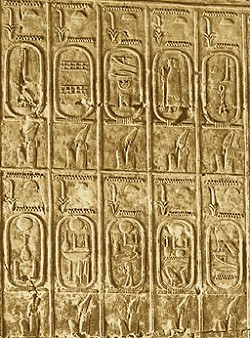
The most important kings of this dynasty were Teti, Pepi I, Merenre and Pepi II (the latter reigned for 94 years, according to tradition). Not long after the start of the dynasty, Egypt began to have problems. The financial problems were at first relieved by doubling the frequency of the cattle count, the basis of the taxation system. There was intensive trade with the east (Sinai, western Asia) and also with the countries to the south of Egypt, such as Punt and Nubia, from whence incense, ivory, gold and other items were imported. In his tomb at Aswan, the nomarch Harkhuf tells of several journeys he undertook to Nubia. On one of them he brought back a dwarf for the king, who was very pleased. The problems in Egypt proved huge, however, and this dynasty consequently reflects a gradual breakdown of authority, with the local nomarchs becoming virtually independent. This decline is demonstrated by a number of different things. The poorer sections of the population revolted against their position. Problems in Nubia could not be sufficiently repressed. Increasingly, funerary matters that had previously been the king's prerogative were now also included by private individuals in their tombs. The quality of the art also declined, both in execution and in material (types that were cheaper and easier to work). Eventually, the erosion of central power led to the end of the Old Kingdom.